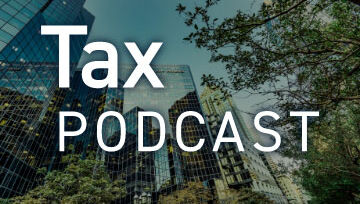In today’s digital operating landscape, service delivery has become increasingly reliant on advancing technologies and the interconnectivity of systems and information. This has enabled providers to optimize processes, streamline costs and deliver more effective customer experiences.
However, it has also brought risks. Data breaches and cyber-attacks are now commonplace and, as a result, many customers (also known as ‘user entities’) are demanding an SOC report as part of their vendor due diligence programs.
What Do SOC 2 Reports Focus On?
Conducted by impartial third-party auditors, SOC reports involve a thorough examination of a service organization’s system and data controls. Among the three primary types (SOC 1, SOC 2, and SOC 3), SOC 2 is the most widely recognized. While SOC 1 focuses on providing assurance regarding controls relevant to financial reporting, SOC 2 and SOC 3 deliver a comprehensive evaluation of controls related to security, availability, processing integrity, confidentiality and privacy. Organizations can also opt to explore SOC for Cybersecurity and SOC for Supply Chain as additional options to consider.
From the viewpoint of the customer, a successful SOC 2 report offers confidence that a service provider has effective measures in position to safeguard the security and reliability of their sensitive data, serving as proof of their ability to meet and uphold service level commitments to their clientele. Simultaneously, for the organization undergoing the audit, it can significantly enhance their business in terms of finances, operations and reputation.
To benefit from this added value, service organizations must first be clear about the criteria by which they wish to be examined. They should ensure the boundaries and scope of the SOC 2 report are aligned with their overall service level commitments, customer expectations and inherent risks, as well as any specific regulatory requirements.
It is also important to note the updated SOC 2 guidance released by American Institute of Certified Public Accountants (AICPA) at the end of 2022 may have an impact on service organizations who have issued reports in prior years, regardless of the criteria elected.
How SOC 2 Reports Drive Organizational Value
For organizations who do establish the right criteria and system boundaries for their SOC 2 report, there are a variety of ways it can drive value for their business. These include:
Actionable Security Insights
An SOC 2 examination gives organizational leaders a detailed picture of the controls in place for risk mitigation, change management, vendor management, access, authorization and more. They can then use this knowledge to identify and address areas for improvement, including among any subservice organizations.
Enable Operational Efficiency
Right-sizing processes and controls based on SOC 2 insights helps organizations operate more efficiently and productively while still complying with their service level commitments (whether contractual or regulatory). This, in turn, can lead to significant cost savings.
Create a Competitive Differentiation
A successful SOC 2 report sets organizations apart from their competitors, confirming to customers and prospects that they are committed to high standards of security and data protection. This may give them the edge in both retaining and winning business.
Meet Regulatory Compliance Requirements
SOC 2 reports help organizations demonstrate and maintain compliance with regulatory requirements at both a national and industry-specific level. For example, a firm that provides government contracting services will likely want to ensure its SOC 2 aligns with the scope of their Cybersecurity Maturity Model Certification (CMMC) environment. Likewise, healthcare industry service providers may wish to make their SOC 2 borders and scope consistent with the standards set out by Health Insurance Portability and Accountability Act (HIPAA).
Build Better Relationships
By providing transparency around an organization’s controls, an SOC 2 report can create stronger, more trusted relationships with key stakeholders, including customers, shareholders and regulators. It also allows them to agree upon clear responsibilities with customers and partners around cyber protection. SOC 2 reports are commonly used to respond to clients or prospects vendor diligence questionnaires, and as such, the “audit once report many” methodology can lead to significant time savings for personnel responding to those vendor diligence questionnaires.
Enhance Targeted Investments
SOC 2 reports serve as a strategic roadmap for future cybersecurity investments, helping organizations target any new or enhanced solutions in the right areas and align with (or even exceed) industry best practices.
How Can Cherry Bekaert Help?
Cherry Bekaert’s Risk and Accounting Advisory and Cybersecurity professionals have more than three decades of SOC and information assurance experience across all industries and disciplines and serve on state-level boards and AICPA committees, overseeing the implementation of new standards. Whether you are preparing for a first-time SOC examination or completing your annual occurrence of the assessment, our specialized teams work closely with your organization to ensure all your needs are met. Reach out to your Cherry Bekaert advisor or a member of our Information Assurance & Cybersecurity practice.





